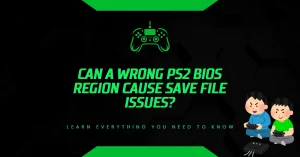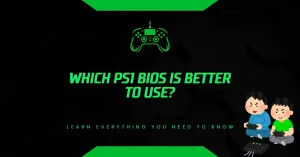What is the Difference Between PS2 BIOS and PS2 Firmware?
Have you ever wondered why emulators ask for a PS2 BIOS file but never mention firmware? Or why your console runs fine without updates, yet BIOS is always required? It’s because these two terms sound similar but serve different purposes. Let’s break down what sets them apart clearly and simply.
PS2 BIOS vs Firmware: Not the Same Thing
At first glance, BIOS and firmware seem interchangeable. They’re both types of low level software inside the PlayStation 2. But in truth, BIOS is just one part of the PS2’s firmware, and it’s the most important part for booting and basic function.
Think of it like this:
| Term | What It Means | Role in PS2 |
| Firmware | All embedded software that controls hardware | Includes BIOS, IOP code, DVD drivers, etc. |
| BIOS (Basic Input/Output System) | A specific set of startup instructions burned into a chip | Handles boot up, hardware checks, and user interface |
So, BIOS is firmware, but not all firmware is BIOS.
What Exactly Is the PS2 BIOS?
The BIOS (Basic Input/Output System) is the very first code the PS2 runs when you switch it on. It’s stored permanently on a chip inside the console and performs these tasks:
- Starts the boot sequence
- Checks for the presence of hardware like memory cards or controllers
- Loads the system menu
- Hands control over to the game disc or software
Without a BIOS, the PS2 wouldn’t know how to boot or interact with your game. That’s why BIOS files are critical for emulators like PCSX2. Without it, emulators can’t mimic a real console.
BIOS and Emulation: Why It’s Needed
When you use a PS2 emulator on PC or Android, the emulator replicates the console’s hardware, but it still needs the original BIOS to function. That BIOS tells the emulator how to:
- Load and run games
- Display menus
- Handle memory card access
- Use region settings (like PAL vs NTSC)
It’s illegal to download a BIOS from the internet, which is why most emulators require you to dump your own BIOS from your real PS2 console.
What Is PS2 Firmware?
Firmware is the larger category that includes the BIOS plus other critical system software stored inside the console.
For example, PS2 firmware also includes:
- IOP (Input Output Processor) firmware for managing memory cards and USB ports
- DVD ROM firmware to run movie discs or game DVDs
- Dev9 code for handling network adapters and hard drive functions (on some models)
These additional firmware parts help the system run various functions after the BIOS finishes its job. But unlike BIOS, this extra firmware isn’t needed for emulators in most cases.
Do You Ever Need to Update PS2 Firmware?
On real PS2 consoles, firmware isn’t updated like modern devices. Everything is stored in read only memory (ROM) and is not designed to be upgraded. Sony didn’t release firmware updates for PS2 like they do for PS4 or PS5.
The only real “update” was through accessories like:
- HDD utility discs (which added drivers for hard drives)
- Network setup discs (for online play setup)
- Free McBoot or other softmod tools (for advanced users)
So unlike modern consoles, PS2 firmware stayed the same unless the user installed third party tools.
Why This Difference Matters for Gamers and Emulator Users?
Understanding the difference between PS2 BIOS and firmware is more than just technical trivia. It affects how you set up and use both real consoles and emulators.
Here’s how:
| Use Case | Needs BIOS? | Needs Full Firmware? |
| Playing on Original Console | Already built in | Already built in |
| Running Games in PCSX2 Emulator | Yes | Only BIOS is required |
| Booting from USB or HDD on PS2 | Yes | Needs extended firmware |
| Using Homebrew or Mods | Yes | Might need extra firmware |
If you only care about loading games on an emulator, just the BIOS is enough. But if you’re using a modded PS2 to run games off USB or HDD, the firmware files for those add ons matter too.
Different Types of PS2 BIOS Files
Depending on the region and model of your PlayStation 2, you may come across several BIOS file formats:
Common BIOS Components:
- .BIN – Main BIOS file
- .ROM1 and .ROM2 – Memory partitions
- .EROM – DVD controller firmware
- .NVM – Non volatile memory (stores system settings)
- .MEC – Stores controller and accessory configurations
📌 All these parts are included in a full BIOS dump. Emulators usually require at least the .BIN file to start.
Can You Run PS2 Without BIOS or Firmware?
No. Whether on real hardware or emulator, you can’t run a PS2 game without a BIOS. It’s the heart of the system. Without it, nothing boots.
Even firmware tools like Free McBoot rely on the existing BIOS to launch. They just expand the functionality afterward, adding new menu options or loading apps from memory cards.
Conclusion: BIOS Boots, Firmware Runs
To sum it up, BIOS is the startup brain of the PlayStation 2, and firmware is the full package that helps the console operate all its parts. If you’re setting up an emulator or learning how the PS2 works behind the scenes, knowing this difference helps you avoid common issues like missing files or boot failures.
For emulators like PCSX2, just focus on getting a full BIOS dump. That’s the part you absolutely need. The rest of the firmware stays behind the scenes unless you’re diving deep into advanced mods.
- Why Does AetherSX2 Say “Missing BIOS” Even After Adding It? - September 23, 2025
- How Do Developers Test Emulators Without Using BIOS Files? - September 23, 2025
- Can You Transfer a PS2 BIOS Between Different Consoles? - September 23, 2025
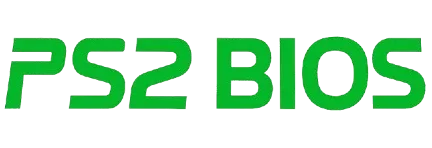
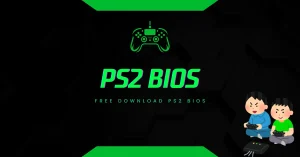
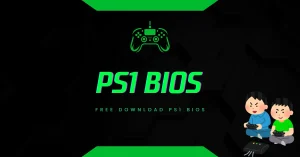

![PS2 Emulator Download for PC | PCSX2 Emulator [Official] PS2 Emulator Download for PC PCSX2 Emulator [Official]](https://bios-ps2.com/wp-content/uploads/2025/10/PS2-Emulator-Download-for-PC-PCSX2-Emulator-Official-300x157.webp)
